Tri Vu
Deep Image Prior for Sparse-sampling Photoacoustic Microscopy
Oct 15, 2020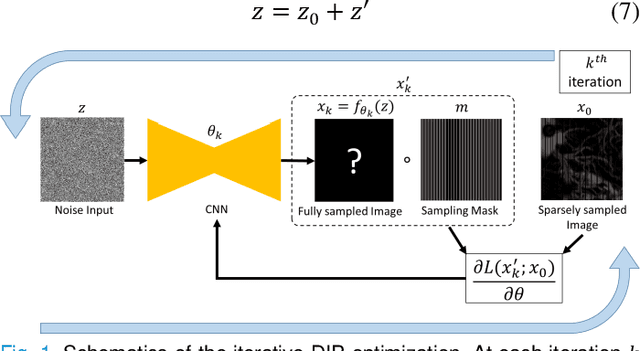
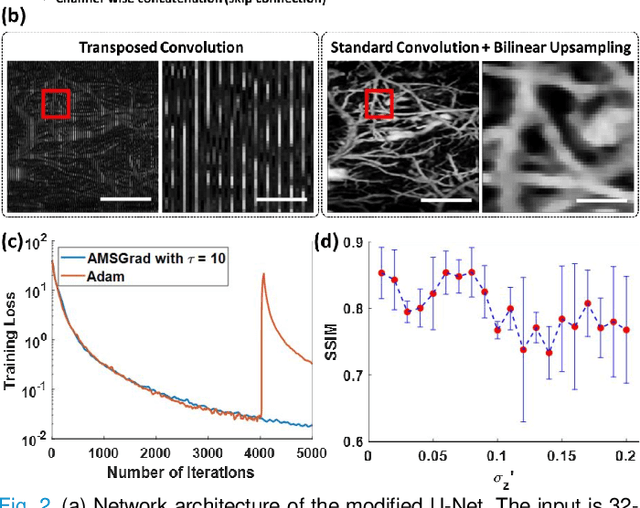
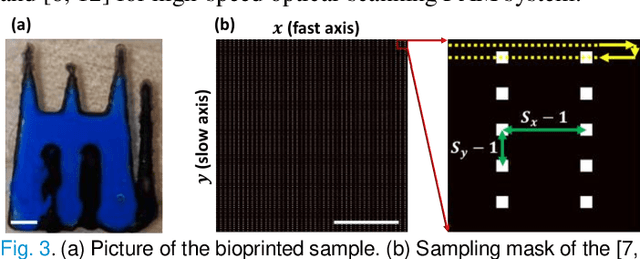
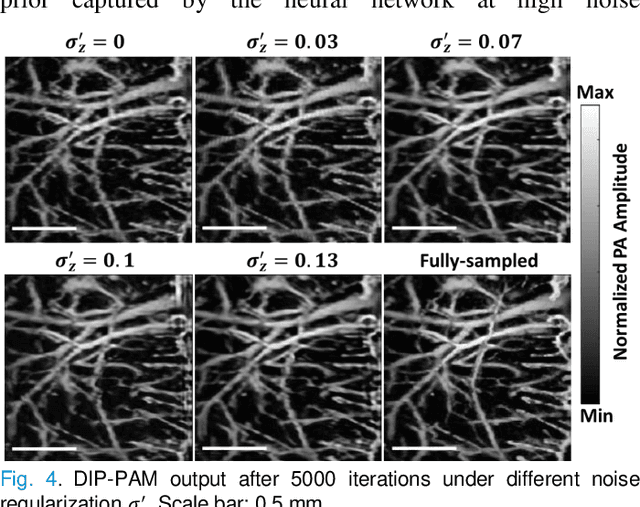
Abstract:Photoacoustic microscopy (PAM) is an emerging method for imaging both structural and functional information without the need for exogenous contrast agents. However, state-of-the-art PAM faces a tradeoff between imaging speed and spatial sampling density within the same field-of-view (FOV). Limited by the pulsed laser's repetition rate, the imaging speed is inversely proportional to the total number of effective pixels. To cover the same FOV in a shorter amount of time with the same PAM hardware, there is currently no other option than to decrease spatial sampling density (i.e., sparse sampling). Deep learning methods have recently been used to improve sparsely sampled PAM images; however, these methods often require time-consuming pre-training and a large training dataset that has fully sampled, co-registered ground truth. In this paper, we propose using a method known as "deep image prior" to improve the image quality of sparsely sampled PAM images. The network does not need prior learning or fully sampled ground truth, making its implementation more flexible and much quicker. Our results show promising improvement in PA vasculature images with as few as 2% of the effective pixels. Our deep image prior approach produces results that outperform interpolation methods and can be readily translated to other high-speed, sparse-sampling imaging modalities.
Reconstructing undersampled photoacoustic microscopy images using deep learning
May 30, 2020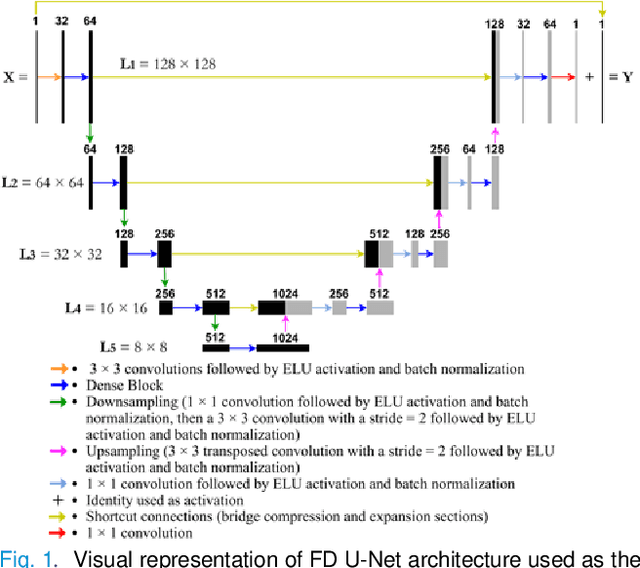
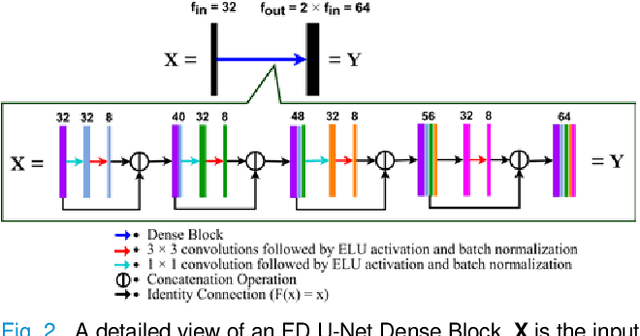
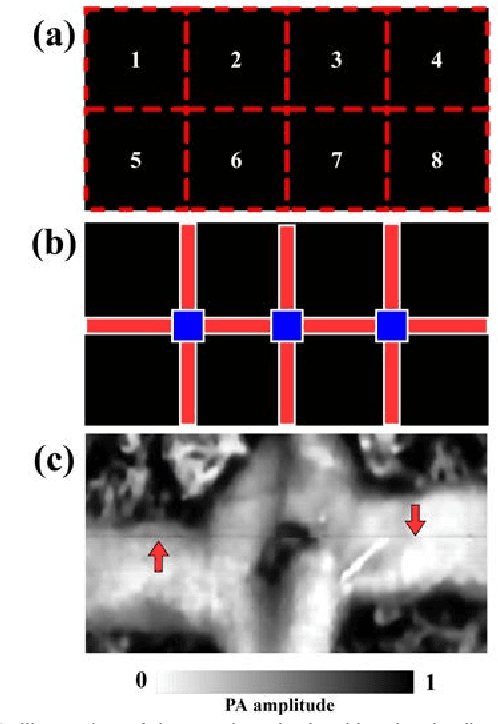
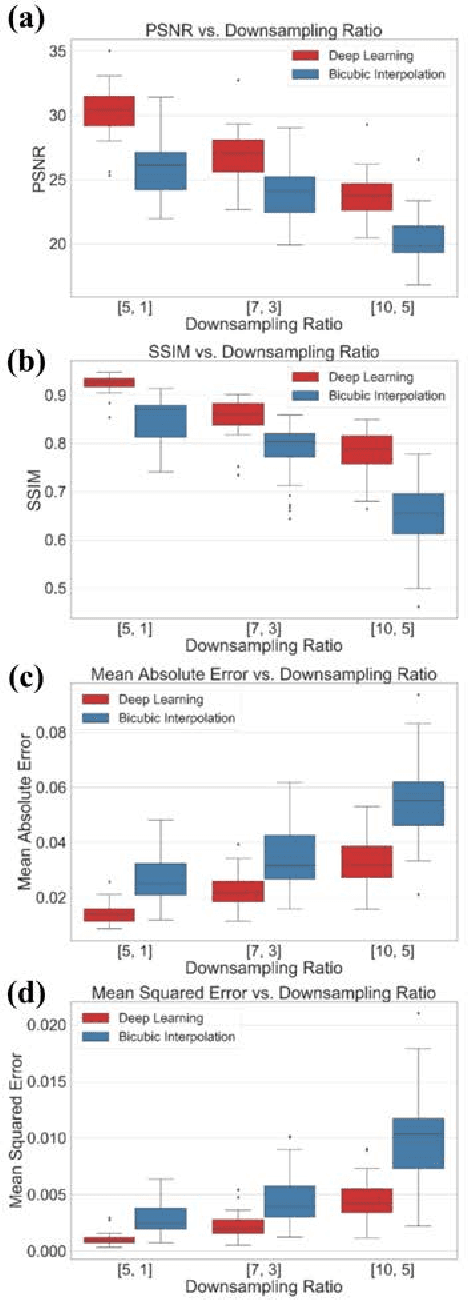
Abstract:One primary technical challenge in photoacoustic microscopy (PAM) is the necessary compromise between spatial resolution and imaging speed. In this study, we propose a novel application of deep learning principles to reconstruct undersampled PAM images and transcend the trade-off between spatial resolution and imaging speed. We compared various convolutional neural network (CNN) architectures, and selected a fully dense U-net (FD U-net) model that produced the best results. To mimic various undersampling conditions in practice, we artificially downsampled fully-sampled PAM images of mouse brain vasculature at different ratios. This allowed us to not only definitively establish the ground truth, but also train and test our deep learning model at various imaging conditions. Our results and numerical analysis have collectively demonstrated the robust performance of our model to reconstruct PAM images with as few as 2% of the original pixels, which may effectively shorten the imaging time without substantially sacrificing the image quality.
 Add to Chrome
Add to Chrome Add to Firefox
Add to Firefox Add to Edge
Add to Edge